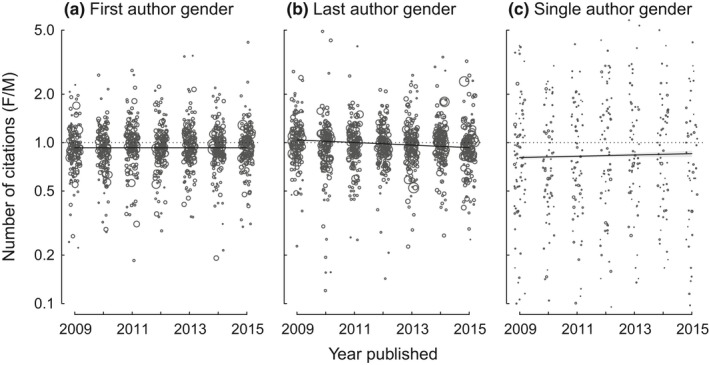Figure 8.

Variation through time in the number of citations obtained by articles varied with gender of the (a) first author, (b) last author, and (c) sole author. Plotted are predictions from a mixed‐effect model of year * gender, with journal as a random effect. Points represent the ratio of the citations gained by papers published by female and male authors in journal by year combinations and are sized proportional to the number of papers assessed. For the last author model only, the interaction between year and gender was significant. Thus, from 2009 to 2015, papers with male authors generally but not consistently obtained more citations than did papers with female authors. Values >1 indicate that papers with female authors obtain more citations, whereas values <1 indicate that papers with female authors obtain fewer citations. Generalized linear mixed‐effect models: NumberCitations = PublishingYear + AuthorGender, random effect = Journal. First author gender (Panel a): year: = 302,720, p < 0.0001, gender: = 1633, p = < 0.0001, year × gender: = 1.88, p = 0.17. Last author gender: (Panel b): year: = 307,265, p < 0.0001, gender: = 3.66, p = 0.055, year × gender: = 284.7, p < 0.0001. Single author gender: (Panel c): year: = 14,245, p < 0.0001, gender: = 432.7, p < 0.0001, year x gender: = 3.16, p = 0.075.
